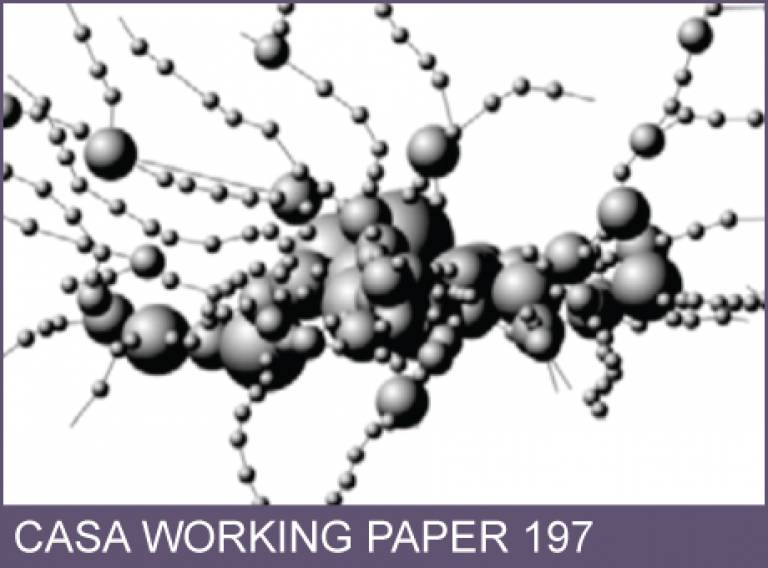CASA Working Paper 197

8 August 2014
Visual Analytics for Urban Design
Here we outline the rapid development of new tools for visualising cities and their functions with an emphasis on how they can be used in the analytical phases of urban design. We begin with the most obvious examples of digital visualisation – 2D and 3D maps – from geographic information systems (GIS) and computer-aided design (CAD) technologies. These merge into augmented and virtual realities and imply that much of what has been developed for desktop applications is now shifting to the web. We then examine networks, noting the early development of space syntax but then moving to flow systems of various kinds that record interaction between the elements of a design. We look at models of flows, specifically traffic and pedestrian movement and then consider how new social media produced in real time is being used to inform small-scale interactions at the level of spatial and social networks. Scientific visualisation is also affecting design in that more abstract infographics are being used to display and visualise the complexity of design, and to this end, we show various new forms of network and connectivity. Finally we note how real time data is being delivered to designers using various forms of dashboard which summarise how cities are performing and we conclude by suggesting that these new kinds of visualisation are beginning to enrich the field of urban design by innovative display of ideas and their access through online participation.
Authors: Michael Batty & Andrew Hudson-Smith
Publication Date: 2 August 2014
RPS ID:
Download Working Paper 197. File size 2.8MB, PDF format.
 Close
Close

